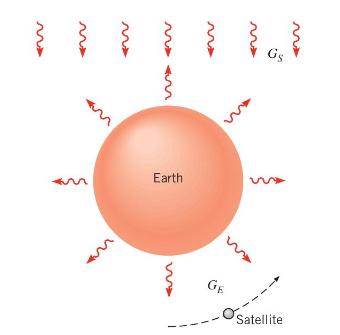A spherical satellite of diameter (D) is in orbit about the earth and is coated with a
Question:
A spherical satellite of diameter \(D\) is in orbit about the earth and is coated with a diffuse material for which the spectral absorptivity is \(\alpha_{\lambda}=0.6\) for \(\lambda \leq\) \(3 \mu \mathrm{m}\) and \(\alpha_{\lambda}=0.3\) for \(\lambda>3 \mu \mathrm{m}\). When it is on the "dark" side of the earth, the satellite sees irradiation from the earth's surface only. The irradiation may be assumed to be incident as parallel rays, and its magnitude is \(G_{E}=340 \mathrm{~W} / \mathrm{m}^{2}\). On the "bright" side of the earth the satellite sees the earth irradiation \(G_{E}\) plus the solar irradiation \(G_{S}=1368 \mathrm{~W} / \mathrm{m}^{2}\). The spectral distribution of radiation from the earth may be approximated as that of a blackbody at \(280 \mathrm{~K}\), and the temperature of the satellite may be assumed to remain below \(500 \mathrm{~K}\).

What is the steady-state temperature of the satellite when it is on the dark side of the earth and when it is on the bright side?
Step by Step Answer:

Fundamentals Of Heat And Mass Transfer
ISBN: 9781119220442
8th Edition
Authors: Theodore L. Bergman, Adrienne S. Lavine





